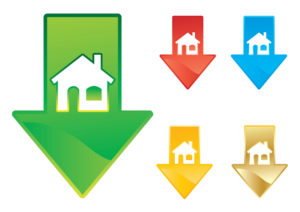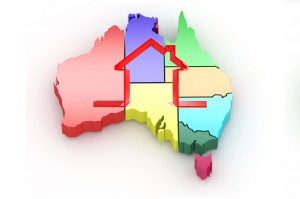Building approvals data for January 2017 was released by the Australian Bureau of Statistics.
According to the release there were 17,412 dwellings approved for construction over the month which was 1.8% higher over the month but -12.0% lower year-on-year.
In January 2017, the 17,412 dwellings approved for construction was 19.1% lower than its peak of 21,519 approvals in October 2015.
Despite approvals being substantially lower than their recent peak, they remain high in a historical context.
In January there were 8,989 houses approved for construction and 8,422 units approved.
Over recent months it has been the unit segment which has been dragging approvals lower however, in January the 8,989 houses approved for construction was the lowest number of house approvals since October 2013.
In January, house approvals fell by -2.2% while unit approvals rose by 6.6% and year-on-year house approvals are -8.7% lower and unit approvals are -15.4% lower.
It has now been five months since there has been more units approved for construction than houses highlighting the substantial recent slowdown in unit approvals.
Data on the types of units being approved, which is not seasonally adjusted, shows that over recent months there has been a substantial pull-back in high-rise and townhouse approvals.
High-rise approvals (defined as anything four storeys or larger) peaked at 8,569 approvals in July 2016 and the 4,721 approvals in January was -44.9% lower than volumes at the peak.
In January 2017, 24.4% of unit approvals were for townhouses, 6.0% were for low-rise units and 69.6% were for high-rise units.
Looking at approvals across the capital cities we have used a rolling three month average to smooth out some of the monthly volatility in approvals.
The trend is pretty clear that house approvals are trending lower, particularly so across the larger capital cities.
Compared to volumes a year ago, approvals are lower in: Sydney (-6.6%), Brisbane (-3.8%), Adelaide (-2.7%), Perth (-16.8%) and Darwin (-28.7%) and they are higher in Melbourne (+6.4%), Hobart (+23.2%) and Canberra (+8.4%).
Capital city unit approvals data shows an even greater downturn in approvals over recent months across the major capital cities.
The above charts show that unit approvals are much lower than their previous peaks across all capital cities however, approvals are higher than they were a year ago in: Melbourne (+32.2%), Perth (+13.4%), Hobart (+19.6%) and Canberra (+110.2%).
Brisbane has seen the most substantial decline in unit approvals over the past year (-71.7%) with approvals also lower in Sydney (-10.2%), Adelaide (-17.2%) and Darwin (-53.6%).
While the housing construction boom over the past few years has greatly helped the national economy as mining investment has slowed it seems clear that the housing construction cycle has passed its peak.
There remains many new dwellings under construction and with a heightened level of unit under construction that will continue to provide stimulus however, it appears as if dwelling commencements are likely to slow from here given fewer approvals.
The slowdown has come on the back of concerns of a unit oversupply in certain markets, a substantial increase in the cost of development sites and tighter lending policies being implemented both in terms of lending to the developers to construct these dwellings and purchasers of these new dwellings.
From a broader economic standpoint, if the slowdown in housing construction does continue the economy will need some other sector to pick-up the slack.
As mining investment faded housing construction picked up with housing construction looking set to fade we wonder what sector will pick-up next.
Most likely there will be more reliance on investment in transport related infrastructure, as well as higher consumption from both the private and public sector which will hopefully be fuelled by an extended period of low interest rates.
With commodity prices continuing to trend higher, the economy should continue to see the benefits of high values commodity exports as well.








No comments:
Post a Comment